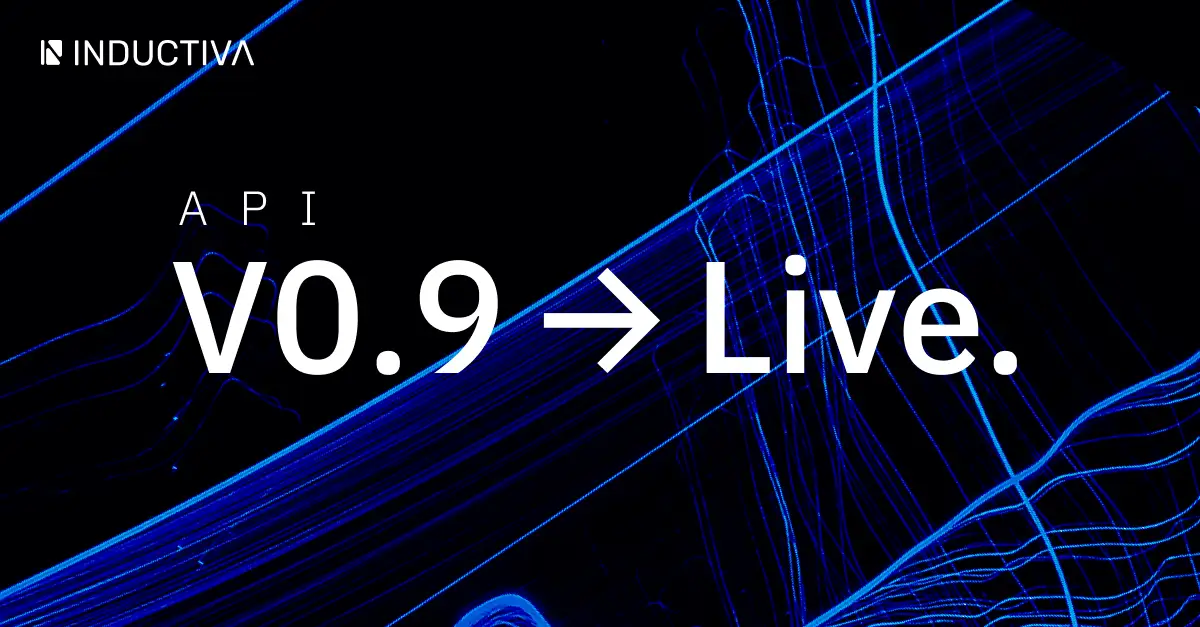Today, we’re excited to roll out the v0.9 release of our API, filled with new features and major improvements! We have continued to work hard to make running large-scale simulations on the cloud as seamless and efficient as possible, and with this update we made significant improvements towards that goal! Whether you’re a longtime user or just getting to know us, there’s something in this release for everyone.
We’ve listened to your feedback and focused on enhancing your overall experience with our API. From dynamic disk resizing to more flexible computing options, we’ve simplified resource management and brought in more powerful simulators to boost your capabilities. We’re all about progress, and while we’ve said goodbye to our Freemium tier, it’s all in service of enhancing the overall experience.
Read on for details of what’s new, what’s better, and what’s gone. And as always, you can check out the full release notes in our documentation here.
The TL;DR
Here’s a quick rundown of our V0.9 release updates:
- New Simulators Added – NWChem v7.2.2, and FVCOM v5.1.0 are now available alongside an updated OpenFOAM v2406 and v2206 with dynamic code execution!
- Farewell to the Freemium Tier – Start exploring our API’s advanced capabilities with the Standard tier and $5 in credits, no expiration date.
- Dynamic Disk Resizing – No more simulations crashing for lack of disk space. If you activate this feature, the disk will automatically expand during task execution as it fills up—up to a specified limit—ensuring your simulation runs smoothly without interruptions. This lets you start conservatively and grow as needed, ensuring both cost-efficiency and flexibility with a pay-as-you-grow approach.
- Full transparency with Inductiva´s Console Dashboard – Gain clearer insights into your simulation and platform usage with updated dashboards, offering a detailed overview of task performance, disk usage, and active machine groups.
- Better I/O – Enjoy simultaneous compression and upload of your input data, minimizing needed disk space and making the process quicker, and access shareable download links once your simulations end.
More Simulators, New Possibilities
Our latest v0.9 release opens the doors to exciting new simulation possibilities with the addition of two powerful simulators to the API. These new additions not only expand what’s possible with our API but also make it easier than ever to run complex simulations with less hassle. Whether you’re working in quantum chemistry, ocean modeling, or dynamic fluid simulations, we’re constantly growing our list of built‑in, ready‑to‑use open‑source simulators. Let’s take a closer look at what’s new:
NWChem: Expanding Chemistry Simulations
We’ve integrated NWChem, a computational chemistry software package that brings quantum chemical and molecular dynamics capabilities to the API. This addition is great news for researchers in fields like biochemistry, drug design, and material science. With NWChem, you can now explore a broader range of molecular dynamics simulations, complementing what’s possible with tools like GROMACS.
FVCOM: Coastal and Ocean Dynamics
Say hello to FVCOM (Finite Volume Community Ocean Model), a sophisticated tool designed for simulating complex coastal and ocean dynamics in 3D. Running this model can be tricky, so check our technical documentation with an example to get you started. For those who are curious about how we compile FVCOM, have a look at this handy compilation guide that we’ve put together.
OpenFOAM’s Dynamic Code Execution: Flexibility in Fluid Simulations
In previous versions, users of OpenFOAM couldn’t take advantage of its Dynamic Code feature—allowing code to be dynamically compiled and loaded during a simulation. Now, thanks to this release, you can fully take advantage of this capability to manipulate simulations in real-time.
Goodbye Freemium, Hello Full Power!
We’ve waved goodbye to our Freemium tier. In v0.8, we introduced a set of incremental tiers, starting with Freemium, which provided limited access to shared resources. Now, all new users will be upgraded to the Standard tier, with $5 in credits and no expiration date. This gives new users access to more powerful capabilities, like launching and managing dedicated resources, so they can fully explore the potential of our API from the start.
Deletion of the Shared Queue
With the removal of the Freemium tier comes the retirement of the Shared Queue. This was a subset of computational resources used by Freemium users to run tasks. Now, all users can launch and manage their own dedicated machine groups, eliminating the need for shared resources. Every task will now run on a dedicated machine, providing more control and efficiency.
Dynamic Disk Resizing
Running out of storage during simulations? Managing data-intensive simulations just got easier with v0.9. Virtual machines (VMs) now come equipped with two disks:
- Boot Disk: Fixed size based on the disk image.
- Data Disk: A flexible size you can control using the data_disk_gb parameter to allocate storage for your simulation data.
We’ve also introduced an automatic resizing feature that increases the data disk size when usage crosses the original data disk parameter. When the auto_resize_disk_max_gb option is specified, it ensures your jobs won’t fail due to lack of disk space and removes the need for manual partition adjustments. If your output files exceed the available space, the data disk dynamically expands during task execution. The upper limit placed on auto_resize_disk_max_gb allows you to control your costs.
Example:
machine_group = inductiva.resources.MachineGroup(
machine_type="c2-standard-16",
data_disk_gb=20,
auto_resize_disk_max_gb=100,
)The advantages of this are huge: This parameter lets you start with a modest data disk size to save on costs, then seamlessly scale up as needed, following a pay-as-you-grow model.
Your Simulation Data, Simplified with Inductiva’s Console
In our ongoing mission to give users full control and insight into their simulations, we’ve introduced several powerful features that provide clear visibility over simulation jobs, resources, and storage. We’ve made it easier to track and manage your tasks every step of the way with our growing console. This user-friendly interface provides real-time stats, including:
- Metrics Dashboard: Track your total number of tasks, success rates, average task duration, and more with real-time statistics in a user-friendly interface. This gives you a clear view of your platform usage and helps optimize future simulations.
- Task Details and Sorting: Click any task to view detailed breakdowns or sort tasks by various columns, making it easier to stay organized.
- Remote Storage Management: Easily monitor your storage usage with detailed breakdowns of directory sizes and creation dates in the Console, or continue managing it via the CLI.
- Machine Groups: Get an instant overview of your active machine groups, including machine type, disk size, and cost per hour, allowing for more efficient resource management.
This is just the beginning—the dashboard will continue to grow with more advanced features in future releases.
Quotas and Performance Control
Our latest updates also give you more flexibility and control over managing computational resources. Here’s how.
Handling Machine Group Quotas
Hitting resource limits can be frustrating, but with our new wait_on_pending_quota flag, you can now choose how to handle machine group quotas. If your quotas are exceeded, you can either wait for them to become available or crash the process immediately.
Example:
resource.start(wait_on_pending_quota=True)If the flag is set to True, the process waits until quotas are available. This allows you to take action, such as freeing up resources, ensuring that your machine group starts as soon as quotas are met—no need to rerun instructions.
Controlling Threads per Core
For highly-parallel tasks or workloads with floating-point calculations, you might want to experiment with controlling the number of threads per core – we now give you the flexibility of doing that. By default, Compute Engine uses simultaneous multithreading (SMT), which allows each CPU core to run two hardware threads. Now, you can specify whether to use 1 or 2 threads per core when starting a machine.
Example:
machine_group = inductiva.resources.MachineGroup(
machine_type="n2d-highcpu-64",
spot=True,
threads_per_core=1,
data_disk_gb=20,
)Setting threads_per_core=1 disables SMT, potentially improving performance for certain tasks. This flexibility ensures you’re making the most of your computational resources.
Hello, I/O!
We’ve made managing your simulation outputs smoother and more efficient. Now, once a simulation is finished, the output is compressed and uploaded to the bucket simultaneously, reducing disk space usage and speeding up the process. Previously, these steps were done consecutively, doubling storage needs.
Accessing your results is simpler too—you can now generate a shareable download link for your output files with a single command:
task.get_output_url()This makes it easy to download results, even with a spotty connection, and allows you to quickly share them with colleagues.
Additionally, to help you keep everything organized, we’ve included all input files in the output.zip. This is especially useful when simulators modify input files during execution, as you’ll now have both the original and updated versions packaged together.
Wrapping It Up
And there you have it! We’re excited to share all the updates in this v0.9 release. Whether you’ve been with us for a while or are just discovering Inductiva, our API is here to help you simplify and scale your simulations on the cloud. This release makes it easier than ever to tap into advanced features and take your projects to the next level. Be sure to stay tuned for future updates.
Don’t Forget to Upgrade
To make the most of the new features and improvements in our v0.9 release, make sure you upgrade the Inductiva client package. Simply run the following command:
pip install --upgrade inductiva
Enjoy the latest version and explore all the new capabilities our API has to offer!
Don’t forget to check out our blog for tips, tricks, and resources. Get started with our API for free, and as always, your feedback helps shape the future of Inductiva’s API—don’t hesitate to share your ideas, request a simulator, or report any issue.
A big thank you to our amazing team and collaborators for making this release happen!



